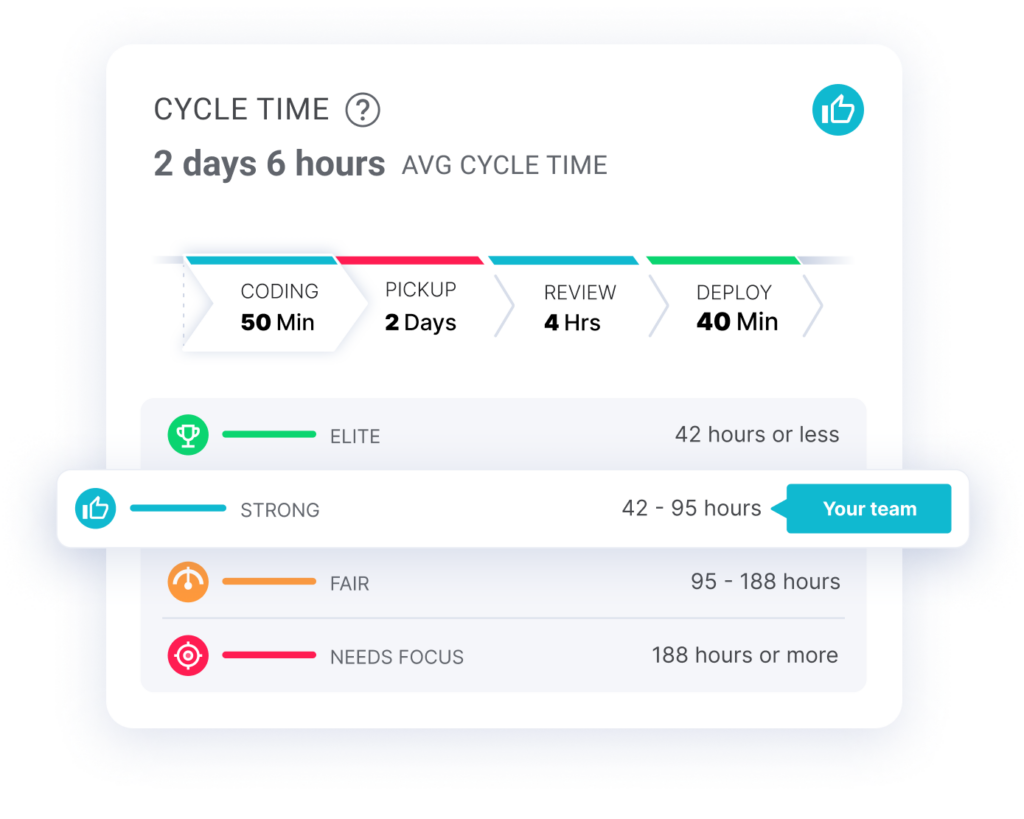Perhaps you’ve noticed that your cycle time is excruciatingly long and your devs keep getting stuck at various points in your software delivery pipeline. Now your CTO wants to know what the plan is to fix these issues, and you’re not totally sure. Enter CI/CD — one of the best ways to reduce dev teams’ overhead and keep the development process moving.
Having an optimal CI/CD pipeline will help you remove the common bottlenecks that plague dev teams. But your pipeline is only as successful as the tools you use to help you with development, testing, and deployment. And when you automate your workflow with CI/CD tools, you’ll clear out many of the obstacles.
In this article, we’ll look at the best CI/CD tools on the market, what each one does, and what makes them so valuable.
Table of Contents
- What Are CI/CD Tools?
- What Are the Benefits of Using CI/CD Tools?
- Top 11 CI/CD Tools
- Go Beyond CI/CD Tools with CM/CI/CD
What Are CI/CD Tools?
Continuous integration tools are built around one idea — simplifying code’s integration into a central repo as much as possible. This generally happens through automation tools that integrate with your Git repositories. CI tools also allow teams to push new updates more frequently, reducing your overall cycle time.
Continuous deployment tools then take these fresh updates and get them into production as quickly and safely as possible. CD tools aim to speed up the time it takes to build, test, and release software. With that, teams can release new updates way more frequently, boosting your deployment frequency and making huge strides for your teams.
What Are the Benefits of Using CI/CD Tools?
A proper CI/CD pipeline will help your devs perform much better. Here are the three biggest improvements we see from using CI/CD tools:
1. Improve Cycle Time
CI/CD tools help dev teams crank out code more often because they automate the integration of that code into the repo. And when code goes to production swiftly, your devs and clients will be happier, products will receive updates quickly and often, and cycle times will be much better overall.

2. Improve Productivity and Efficiency
With CI/CD tools, you can gain insight into teams’ performance, so you can spot and prevent bottlenecks from the start. They also allow dev teams to shape their workflow based on their needs, so they always have what they need to do their work properly.
3. Reduce Developer Friction
CI/CD tools are a good way to automate tedious tasks devs used to do manually. For example, some of them automate the container creation process, meaning devs will finally be able to deploy and patch applications more rapidly.
Top 11 CI/CD Tools

Source: Flexagon
No software is perfect (not even VIM, sorry elitists), but it can still help shore up a team’s weaknesses or reinforce its strengths. That’s also the case for CI/CD tools — provided you choose the right ones. The best CI/CD tools are easy to use, secure, and efficient. Their setup, script development, and maintenance should also be straightforward.
The most useful CI/CD platforms also integrate with other tools like GitHub, GitLab, or Bitbucket, streamlining your Git processes. On top of that, they should allow you to make changes whenever you want, without having to re-upload to the repository each time.
So with that in mind, here are eleven CI/CD tools you should consider.
1. Jenkins
Jenkins is an open-source continuous integration server. This tool focuses on flexibility and integration, so teams can incorporate it into their existing workflow with minimal issues.
Jenkins supports many plugins to extend its capabilities. You can access 1,800+ community-contributed Jenkins plugins from the Jenkins plugins repository including version control, VM hypervisors, and container runtime systems.
This allows any team to pick up and drop in Jenkins as a CI/CD solution without needing to spend hours manually integrating it into their systems. And because dev environments are often complex and very different from each other, Jenkins will shine as a beautiful centerpiece in your pipeline.
2. Harness
Harness leverages machine learning to simplify, accelerate, and secure application delivery through CI/CD automation. This tool sets up one pipeline for the entire org, taking automation to the next level.
Harness also eliminates manual deployments and scripting, with support for canary and blue/green deployments automated through AI/ML. Harness’s observability tools apply the same ML technology to logs and data to automatically detect defective implementations.
This tool harnesses the power of automation into a single pipeline (you’ve heard that pun a million times, sorry). And with that singular line, devs can conduct tests in a secure environment, toggle feature flags for better feature releases, and shape their pipeline across the whole organization. Harness will therefore give devs the freedom and control they need to analyze and improve metrics like deployment frequency and cycle time.
3. Buddy
Buddy helps you jump into DevOps quickly. It gives you reliable delivery pipelines to build, test, and deploy applications and websites. This tool emphasizes ease of use and accessibility, making Buddy simple to slip into your existing workflows.
Buddy’s Actions use Docker official images, enabling you to customize your pipeline as you see fit. And if you need to, you can create your own pipeline. Buddy’s Docker containers also have preinstalled frameworks and languages. This means you can build on these containers and extend their capabilities with monitoring, notifying, and DevOps actions.
Thanks to Buddy, your dev teams don’t need to worry about the complexities of integrating things into your CI/CD pipeline. Instead, they can focus their efforts on implementing new features and fixes, boosting their tempo, and improving the overall developer experience.
4. GoCD
GoCD is a free, open-source CI/CD server that automates build, test, and release processes. The tool also features enterprise add-ons and even built-in value stream mapping tools.
GoCD supports parallel and sequential executions, build comparison, build version tracking automation, and end-to-end visualization of complex workflows. All these enable devs to see every single inch of their development process. This way, they can spot inefficiencies or bottlenecks and have ample time to find the best solutions for their problems.
This level of detail in your pipeline’s overview is invaluable. It’ll allow teams to quickly deploy new versions or rollback with ease, or improve their whole testing process with GoCD’s testing tools. You can finally do more with less, crushing bottlenecks at the start and improving developer productivity.
5. TeamCity
TeamCity is a Java-based continuous integration server. This CI/CD platform is loaded with powerful features for code quality analysis, build problem tracking, and continuous unit testing.
TeamCity’s power lies within its integrations. Like Jenkins, TeamCity works with several popular tools to make a seamless mix for building and testing. It offers full transparency into your tests and their results, which you can use to create a “build chain”. This chain can then help structure your software delivery process for better developer productivity.
You can also integrate TeamCity with Docker, automatically create containers with Docker Compose, and build Docker images. Support for Jira and Bugzilla makes TeamCity an excellent tool for issue tracking. With TeamCity, devs’ code will finally be cruising through the pipeline with absolutely no friction.
6. Bamboo Data Center
Bamboo Data Center is a commercial CI/CD pipeline brought to you by the same folks as Jira. This tool helps devs automate build management. It even helps devs build a CD pipeline that can run tests, assign versions, tag releases, and deploy as needed.
Bamboo uses parallelism so you can optimize build performance and implement CD and release management. It also supports CI, so you only need to commit code and build as the tool triggers integration tests automatically. Bamboo also seamlessly integrates with other Atlassian products like Jira and BitBucket, so that’s great.
Bamboo is a go-to solution for dev teams, and rightfully so. It streamlines your dev processes, so teams can maintain tempo while improving the overall developer experience. Devs can even use Bamboo to catch issues faster, improving your cycle time in the long run.
7. GitLab
GitLab is a GitHub competitor with a CI/CD offering that automates code building, testing, and deployment. This platform offers many tools for all kinds of tasks, and all work together seamlessly.
This CI/CD tool can seamlessly integrate with a Kubernetes cluster, and has an Auto DevOps feature that allows you to detect, build, test, deploy, and monitor applications automatically through the CI/CD pipeline. GitLab’s branching tools enable developers to create, view, and manage code and project data. It also has testing tools for SAST/DAST and scanning tools for dependency and container scanning.
GitLab offers a powerful one-stop shop for all dev teams, big and small. On top of their stellar CI/CD tool, GitLab offers a Git versioning platform that can be an alternative to GitHub. GitLab even has a powerful platform engineering tool. With these tools in your team’s belts, you’ll see developer toil reduce dramatically.
8. CodeShip
CodeShip is a cloud-based CI/CD tool that gives small and growing teams the most optimal pipeline available. This solution empowers devs with an easy-to-set-up platform that integrates with the tools they already know and love.
CodeShip allows you to assign teams according to the roles you need — owner, manager, contributor, and so on — and give user permissions based on these roles. CodeShip also supports parallel pipelines and concurrent builds. It even has a Parallel CI feature that supports running tests in parallel. This means code becomes easy to deploy and release frequently.
CodeShip allows your team to customize their pipeline to their specific needs. This CI/CD tool’s robust features will dramatically reduce devs’ cognitive load and developer toil.
9. CircleCI
CircleCI is a flexible CI/CD platform that can run on any environment. This tool stands out because it prioritizes security — it’s the only CI/CD platform certified by FedRAMP and that’s SOC II compliant.
This platform also prioritizes speed, confidence, and flexibility. Additionally, CircleCI’s continuous end-to-end testing feature enables devs to catch problems early on in the development cycle. CircleCI also allows teams to set up automated workflows that can build, test, and deploy with ease, saving them time and preventing dev toil.
With these features, CircleCI will inspire confidence in your devs, so they can ship quickly and often. As a result, your cycle time decreases, and your deployment frequency increases.
Check out why Netlify’s Senior VP of Engineering, Dana Lawson, prioritizes feature shipping!
10. Wercker
Now known as Oracle Cloud Infrastructure Container Registry, Wercker is a container register service used to store, manage, and distribute container images. This service supports various container image formats, including Open Container Initiative (OCI) and Docker images.
Oracle allows developers to easily pull and push Docker images using the standard Docker CLI and API. The tool’s powerful CLI can also help you complete tasks, and its built-in automatic updates (paired with data protection) help you keep your code safe and up-to-date.
The Oracle Cloud CLI has the same functionality as the Oracle Cloud Console, but it also provides commands that allow you to run scripts, extending functionality. Oracle also integrates with other CI/CD tools like Jenkins and GitLab.
While it may lack a fun name, Wercker is a powerhouse for enterprises. It enables you to properly manage containers, meaning your dev lifecycle will drastically improve. Your new environments will be more streamlined, and devs will have a much lighter workflow.
11. Semaphore
Semaphore is a CI tool that enables easy testing and deployment. It offers a fully customizable, cloud-based, or on-premise platform emphasizing enterprise-level security. This tool also integrates into any Docker deployment, and you can easily deploy it onto the cloud.
On top of that, you can use Semaphore with many popular languages. The platform also allows complex delivery workflow modeling, so you can see exactly how your pipeline is performing. And they offer a robust CLI that lets you inspect logs quickly or maintain total control of your files with smart caching.
With all these features, it’s easy to see why devs love Semaphore. Workflow modeling allows teams to spot inefficiencies in their systems, resulting in better productivity. And with features like fail-fast and job prioritization, devs have less to worry about and can focus more on pushing new code.
Go Beyond CI/CD Tools with CM/CI/CD
CI/CD has cemented itself as a standard practice for most dev teams. It allows teams to rapidly iterate, test, and deploy software in an Agile world. And with the proper CI/CD tools, metrics like cycle time and deployment frequency will drastically improve.
But the next big challenge to solve — that will continue to improve cycle time and unblock devs — is actually getting code merged. After analyzing millions of PRs from thousands of dev teams across all sizes of organizations, we found that the average cycle time is about 7 days. But what’s really interesting is that the code sits in the PR review process for 5 out of the 7 days.
This is frustrating for your devs who just want the satisfaction of finishing a task and moving on to the next one. And it’s clearly a problem for your org’s cycle time as a whole. The plan to improve cycle time you present to your execs has to go beyond CI/CD. It needs to consider how your team can continuously merge too.
Continuous merge (CM) is a set of processes aimed at eliminating the bottlenecks that prevent pull requests and code reviews from progressing. And that’s exactly what makes CM/CI/CD the next evolution of the software development pipeline.
No matter what CI/CD tools you choose, add a continuous merge tool like gitStream too and level up your pipeline. gitStream will automate PR approval and routing processes, merging small changes automatically and sending bigger reviews to the right people. As a result, this will speed up your delivery pipeline. The best news? gitStream is totally free, so you can bypass the finance guys and gals and get started improving straight away.





